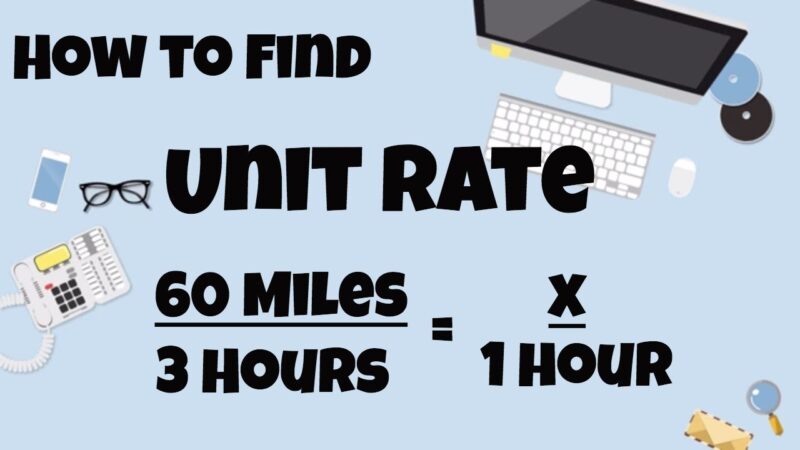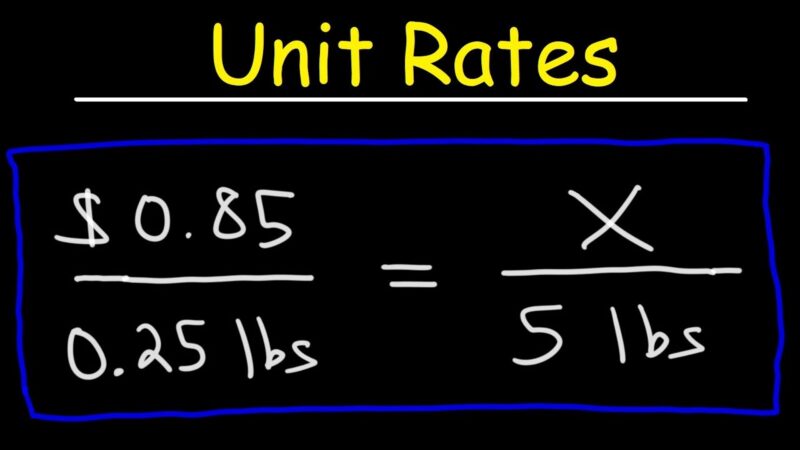In mathematics, a unit rate is a rate in which the second term is 1 unit of measurement. For example, 60 miles per hour is a unit rate. Similarly, 30 students per class is a unit rate. In other words, a unit rate is a way to express how much one quantity is per unit of another quantity. Unit rates can be used to solve many real-world problems, so it’s important for students to understand how to calculate them. This blog post will explore tips for solving unit rate problems.
What is a Unit Rate?
A unit rate is a ratio that has been simplified so that it is a rate per unit. The most common type of unit rate is a rate per hour, but you can also find rates for other time periods, such as per day, week, month, or year. To calculate a unit rate, you need to know the total amount of something and the total amount of time it took to produce that amount. For example, if you want to know the hourly wage for a job that pays $120 for 2 hours of work, you would divide 120 by 2 to get a unit rate of $60 per hour.
How to Solve Unit Rate Problems?

In order to solve unit rate problems, you will need to first identify the units involved in the problem. Next, you will need to determine the rate by dividing the quantity by the time it takes to complete the task. Finally, you will need to calculate the answer by multiplying the rate by the time given in the problem. A unit rate calculator can be found online to make calculations easier.
Tips for Solving Unit Rate Problems
When it comes to solving unit rate problems, there are a few things you can do to make things easier on yourself.
- First, make sure that you understand the problem and what is being asked of you. Sometimes, word problems can be tricky and it’s important to read them carefully.
- Once you know what the problem is asking, try to break it down into smaller pieces. This will help you to better understand the data and make it easier to work with.
- Next, draw a picture or create a table to organize the information in the problem. This will help you to see the relationships between the different values and make it easier to solve for the unit rate.
- Finally, don’t forget to label your answer with the correct units! This is an important step that is often forgotten.
By following these tips, you’ll be well on your way to solving unit rate problems like a pro!
More Advanced Unit Rate Problems

When you’re solving unit rate problems, you’re essentially just solving a division problem. But there are a few things you can keep in mind to make sure you’re getting the correct answer.
Here are some more advanced tips for solving unit rate problems:
- Make sure you understand the question. What are you being asked to find? Are you looking for the unit rate or the total amount?
- If the problem includes a diagram, take a moment to visualize it. This can help you understand the relationship between the various quantities involved.
- Pay attention to the units! Make sure you’re using the same units throughout the problem, or else you won’t be able to get an accurate answer.
- When calculating the final answer, round off to the nearest whole number. This will make it easier to compare your answer to other possible solutions.
Conclusion
We hope that these tips have helped you solve unit rate problems more easily. If you need more help, there are many resources available online and in mathematics textbooks. With a little practice, you’ll be solving unit rate problems like a pro in no time!


